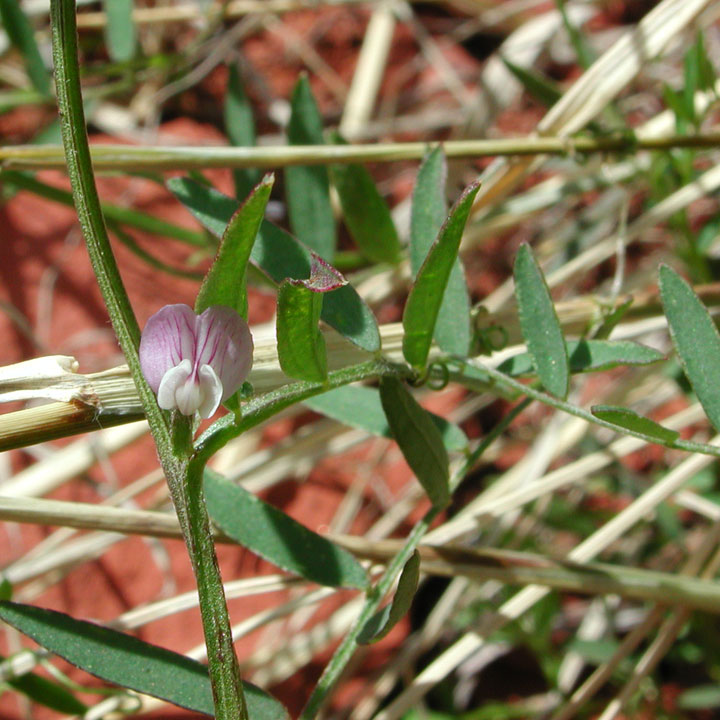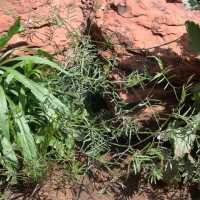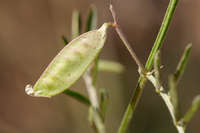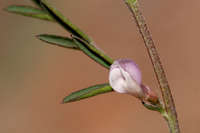|
|
 Leaflets Max Licher @http://swbiodiversity.org, Usage Rights: Creative Commons Attribution-ShareAlike (CC BY-SA) |  Plant Max Licher @http://swbiodiversity.org, Usage Rights: Creative Commons Attribution-ShareAlike (CC BY-SA) |  Seed pod Patrick Alexander @http://swbiodiversity.org, Usage Rights: Creative Commons Attribution-ShareAlike (CC BY-SA) | | | |
|
Origin:
Native
Life Cycle:
Annual
General Desc:
This is an annual twining herb or vine that grows out from under rocks and uses its tendrils to climb up grass stems. Plant can be 6 inches high by 3 feet wide. It provides valuable forage for wildlife.
Identification notes: Flowers 1 to 3, generally crowded or 1; style hairs at tip, below, all around; leaflets 4 to 10; leaflet tip acute, 1-toothed or occasionally squared-off; seeds generally greater than 2.
Height:
Stems trailing to 3 feet
Habitat Description: Limestone slopes with sandy granitic washes, desert scrub, grassland, chaparral, and riparian areas.
Plant Communities:
Desert Scrub, Interior Chaparral, Semidesert Grasslands, Riparian
Elevation: Below 4000 feet
Color:
Bluish to white, pinkish
Shape:
Irregular not in clusters
Tubular:
Y
Flowering Period:
Apr - Jun
Description:
The pea-type flowers arise usually singly along the stem from leaf axils. Flowers are pinkish, pale blue or white in color.
Leaf Color:
Green
Leaf Type:
Compound
Leaf Shape:
Narrow
Leaf Margin:
Smooth
Leaf Attachment:
Opposite
Leaves Clasp:
N
Hairs:
Stems
Spines:
N
Leaf Description:
Leaves are 1 to 3-1/2 inches long with 6 to 12 leaflets terminating in a forked tendril. The stem is covered with short soft hairs.
Fruit Color: Green to brown
Fruit Type: Pod
Fruit Notes: Pods are approximately 1 inch long, with 4 to 8 seeds in each pod.
Seed Notes: Seed is spherical in shape, very hard and light brown in color with dark brown markings.
|
|



